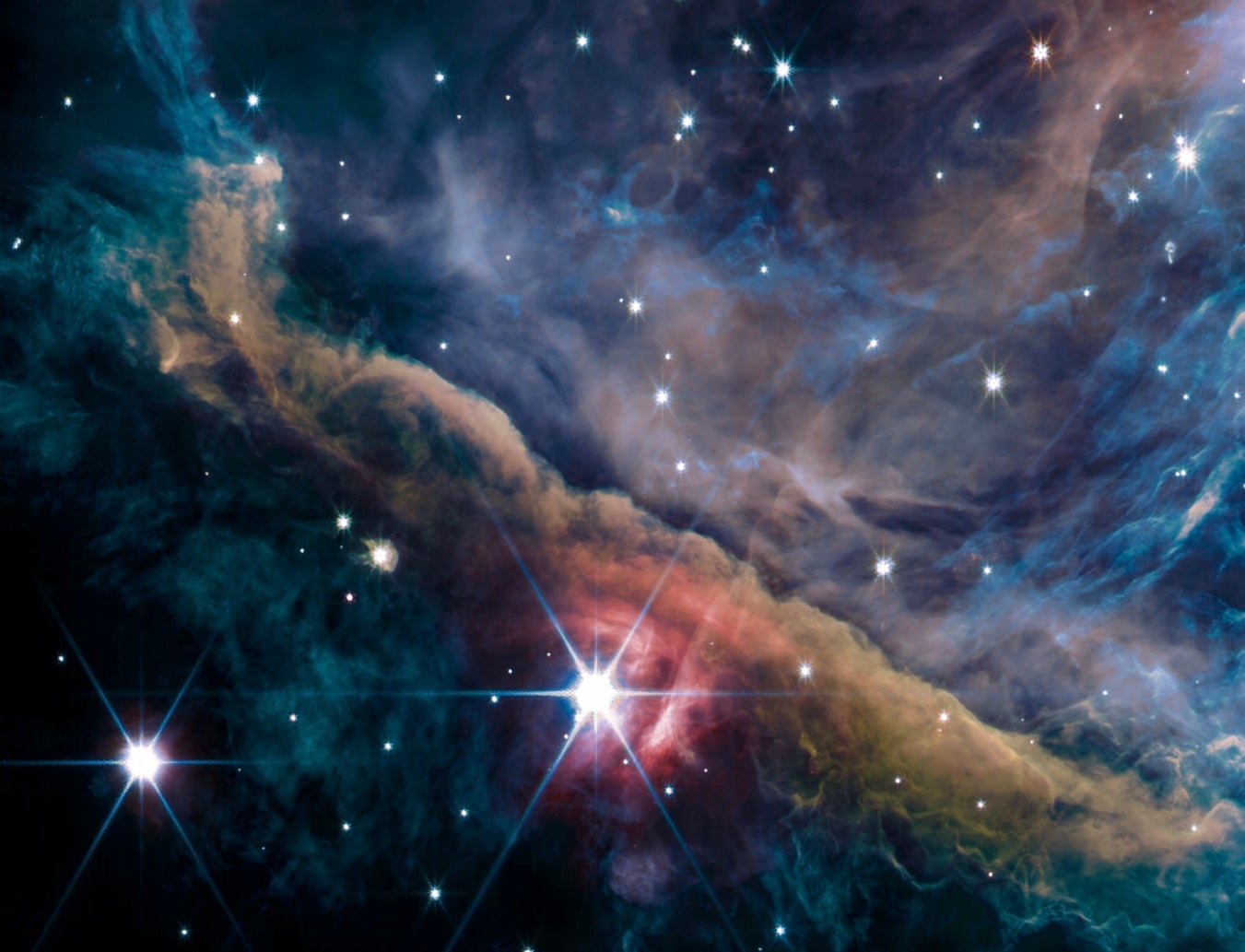
The Orion Nebula is one of the most iconic objects in the night sky. It’s also a hotbed for star formation, with hundreds of stars spread out across a relatively small patch.
But one of those stars, is having a bit of bad luck. A protoplanetary disk designated d203-506, orbiting around a small red dwarf, was on track for planet formation, but it was recently discovered that the massive neighborhood stars are causing the disk to lose about one Earth-mass worth of material per year. The disk is surrounded by higher-massed stars, around 10 times the mass of the Sun. Astronomers have detailed their observations in a new study published by Science. They found that the star may not be able to form any Jupiter-sized planets after all, and there’s a possibility that the problem won’t stop there.
Data from the James Webb Space Telescope (JWST) and the Atacama Large Millimeter-submillimeter Array (ALMA) revealed that intense bursts of far-ultraviolet (FUV) radiation are leading to parts of the protoplanetary disk to evaporate. These disks contain the building blocks of planets, moons, asteroids, and comets.
The disk known as d203-506 is a red dwarf
Olivier Berne, an astrophysicist at the National Centre for Scientific Research and lead author of the study, says that the intense FUV radiation fields heat and ionizes the gas, exciting them to higher velocities. But these velocities are so great that gas escapes from the disk and disperses into the interstellar medium. The star at the center of d203-506 is a red dwarf — the smallest kind of star there is. This means it also has a pretty light center of gravity compared to stars closer in size to the Sun.
The entire disk only has about 10 Jupiter masses worth of material, according to Berne, which “means that in less than a million years, all the mass from this disk could have disappeared due to photoevaporation.” He further explains that one million years is about how long it takes a gas giant like Jupiter to form, so this definitely means the star won’t be getting any Jupiter-sized planets — or any planets, for that matter
“Our findings indicate that photoevaporation in d203-506 will drastically affect the potential for planet formation, both gas giants and Earth-like planets,” Berne says. “Of course, we cannot predict exactly what will happen in d203-506, but what is important is that we demonstrate that photoevaporation and the presence of nearby massive stars is critical to understand planet formation,” Berne says.


d203-506 is not done yet
In order to improve and expand this understanding, Berne and colleagues have been granted further time on JWST to build a catalog of similar protoplanetary disks in the Orion Nebula. Astronomers would then be able to map the fates of similar stars and help create and develop models that could be applied to other star-forming clusters as well.
A big part of undertaking a task like this is understanding the role that larger stars play in stellar nurseries. Berne gives the example of the Sun: While d203-506 could seem doomed to outside eyes, the Sun formed in a similar environment, in the midst of stars much larger than itself. If its protoplanetary disk was doomed, you wouldn’t be reading this right now. The Sun might just be a lonely speck in the night sky.
“I think one important thing that we need to deconstruct in our mind is the idea that star and planet formation is ‘isolated’,” Berne says. “That is not true, and the effects of the local environment, in particular of radiation, may be instrumental in the evolution of early planetary systems and the origins of life.”









